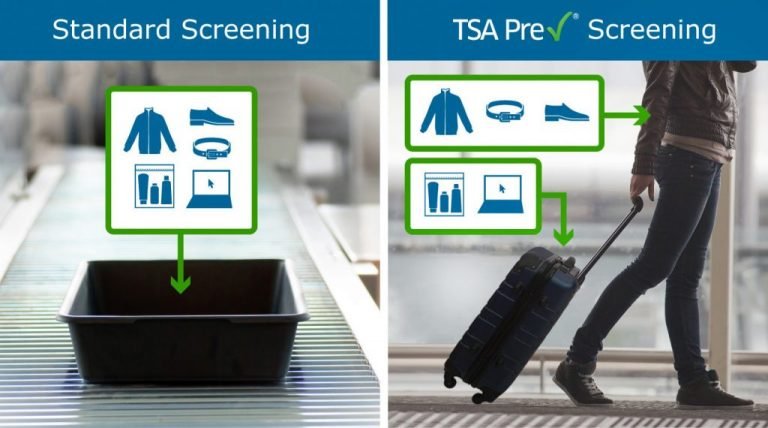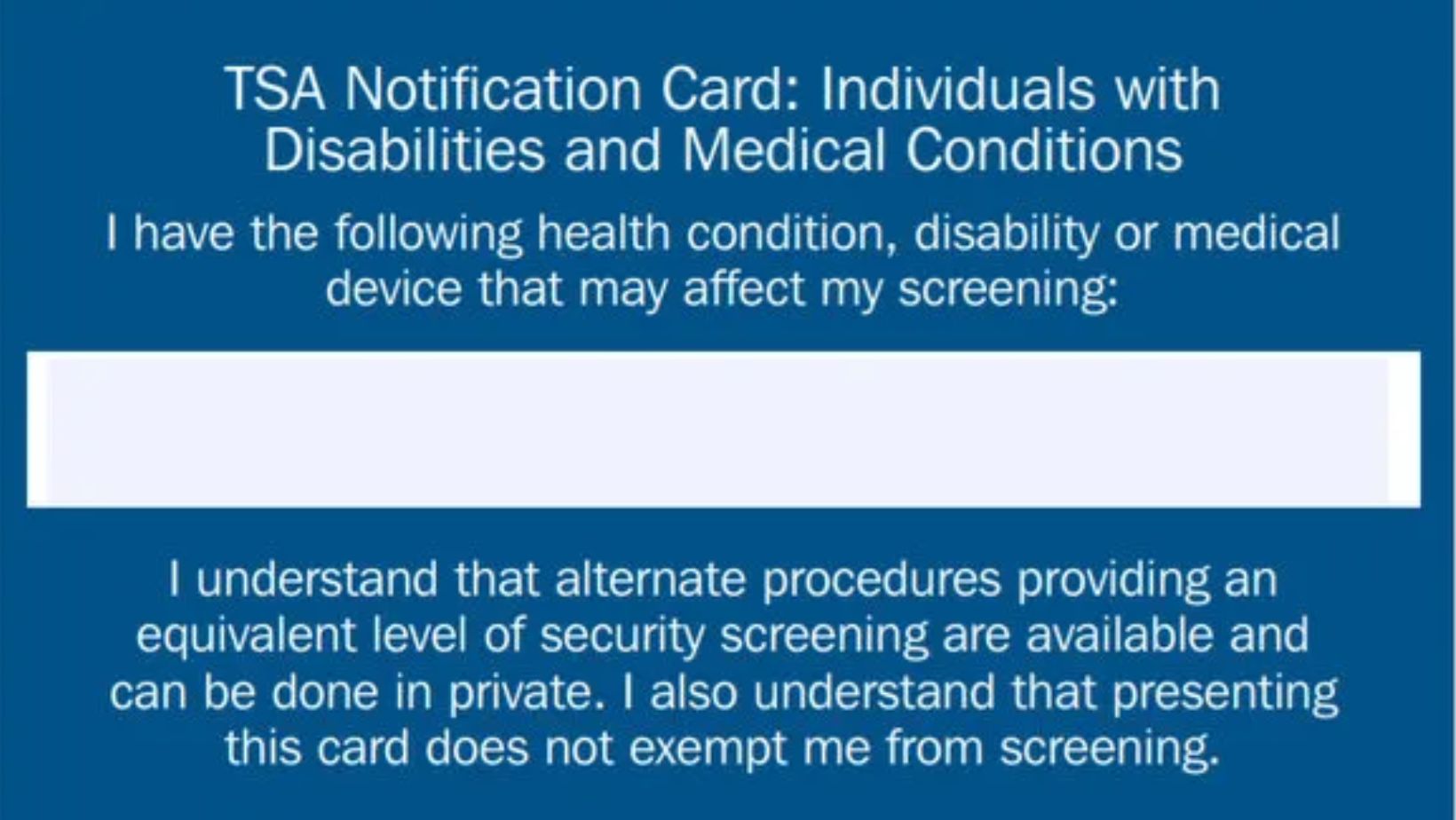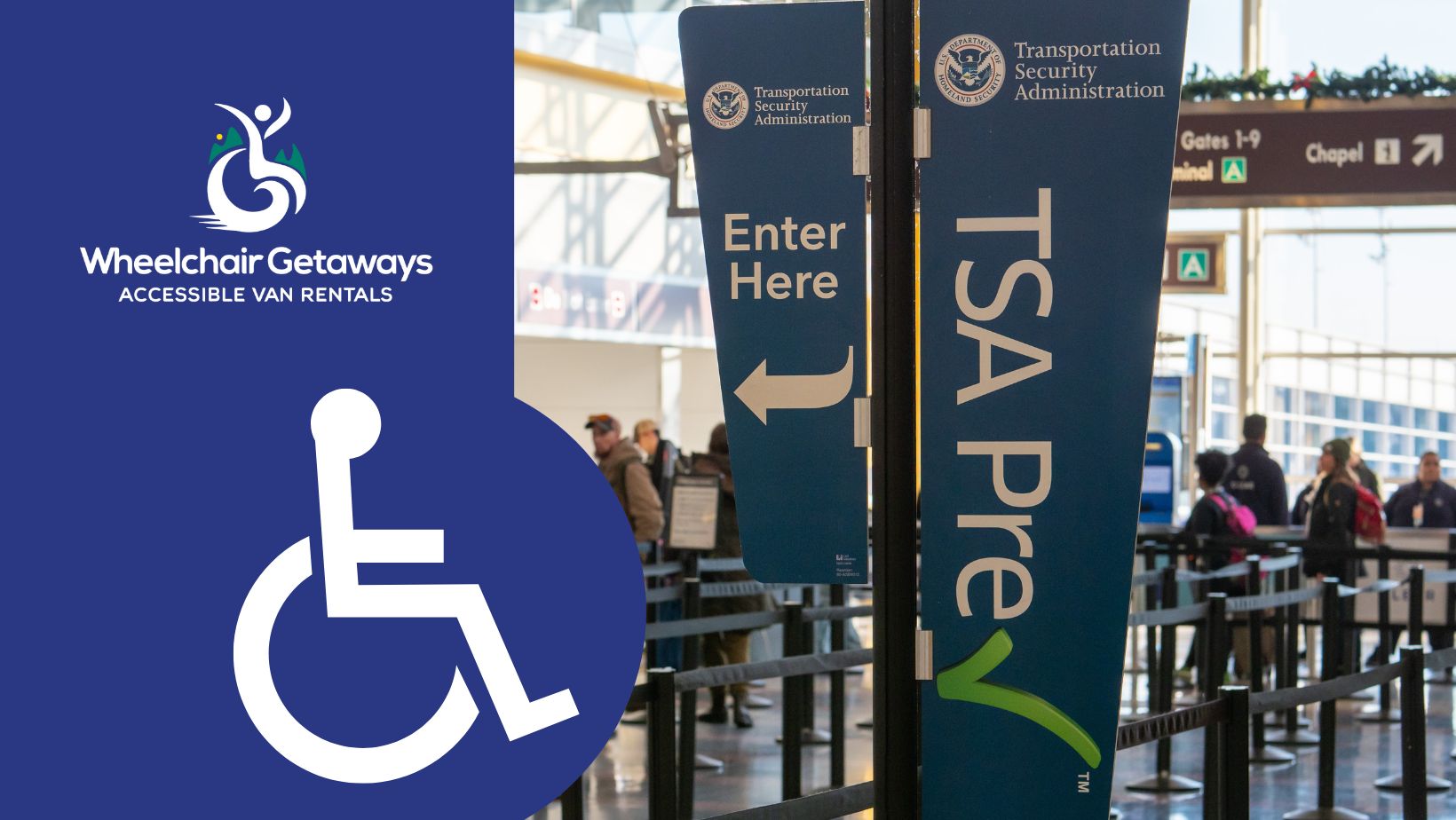With Thanksgiving fast approaching, many of us are planning to travel to Grandma’s house or Aunt Monica’s for that big turkey feast. If you’re traveling for the first time, your mind might be buzzing with a lot of questions. Can I bring my delicious cranberry sauce as a carry-on? Should I wrap my presents or wait until after the flight? What if my accessibility needs slow me down? Is there a separate accessible airport security route? While this airport chaos is inevitable, we’ve got some handy TSA accessibility tips that can help you get through security with time to spare for overpriced airport snacks.
Understanding TSA’s Accessibility Policies
TSA has set up different policies to assist travelers through the screening checkpoints. This includes:
TSA Cares Program
TSA Cares offers assistance to travelers with mobility challenges, hearing or vision impairments, any medical condition that requires discreet handling, or other special circumstances, such as cultural beliefs. It also covers categories ranging from Department of Defense civilians to law enforcement officers and beyond.
TSA officers use a variety of screening methods, including X-ray machines, metal detectors, walk-through metal detectors, advanced imaging technology, and even good old-fashioned pat-downs if necessary. This ensures you’re not secretly carrying prohibited items — besides those creamy mashed potatoes!
Rules for Assistive Devices and Medical Equipment
If you can walk unassisted, you might be asked to go through the metal detector while your mobility aid is scanned separately. If you have difficulty standing in line for longer, you can request to be screened while seated in your wheelchair or scooter. However, officers will inspect your seat cushions, non-removable pouches, or fanny packs. The same goes for prosthetics, casts, support braces, slings, or other medical support appliances.
If you use mobility device like walkers, crutches, or canes, these items must be submitted for X-ray screening. Some devices may outsize the X-ray area, so TSA officers will examine them manually. Just give them a heads-up if you need it back right away.
If you have medical implants, such as a pacemaker or defibrillator, they might trigger alarms when you go through security screening, which might make you even more anxious. To avoid that, inform a TSA officer about your implant before the screening begins so they can conduct a physical inspection.

TSA PreCheck for Travelers with Disabilities
If you can’t spend hours in painstakingly slow lines or argue with annoying line jumpers, TSA PreCheck might be a great alternative to expedite the airport security screening process.
At TSA PeCheck lane, you won’t have to worry about removing your shoes, taking out your electronics, digging out a liquids bag, or fumbling with your belt. Instead, you simply walk through a dedicated line with Advanced Imaging Technology screening and complete the whole process within 10 minutes.
It’s worth mentioning that while TSA PreCheck can streamline your experience, you must be able to stand and walk unassisted for the duration of the AIT screening. You also have to raise your arms above your head for almost seven seconds, which might be challenging. Therefore, you must assess your comfort level and abilities before enrolling and paying for this program.
Like what you’re reading? Subscribe to our newsletter and get new updates directly to your inbox.
Role of Notification Card
If you’re one of those travelers who feel awkward sharing their medical history in the busy checkpoint lane, you can use the TSA Notification Card. This card allows you to discreetly inform TSA officers about your medical conditions or disabilities without having to explain everything verbally. Just print it out, fill it in, and present it during the security screening.
Now, you might be wondering, “How can I take advantage of TSA Cares?” You can contact their helpline at least 72 hours before your flight, and they’ll arrange everything according to your individual circumstances. It’s important to note that TSA Cares will only help you through security lanes, and you have to contact your airline for in-flight assistance or to reach the aircraft.

Post Screening Tips for Travelers with Disabilities
After clearing that hectic security check, take a moment to collect yourself and your belongings. Most airports have a seating area just past security for this purpose. Use it to reorganize without the mad rush. Fix your hair, put your shoes back on, and check essentials like your phone, wallet, boarding pass, or that roast turkey that must make it to the Thanksgiving feast.
General Tips for Planning for Holiday Travel
Keep the following tips in mind while planning your Thanksgiving holiday travel:
- Before booking your flight, call the airport to inquire about accessibility features including services such as wheelchair escorts, accessible restrooms, and seating.
- It’s all about timing! If you’re traveling domestically, arrive at least 2-3 hours before your flight. International? Make it 3-4 hours.
- If possible, choose flights early in the day. There will be fewer people, less turbulence, and a higher chance of on-time departures.
- What’s a holiday without food, right? However, knowing which foods can travel in your carry-on bag is important. Solid items like pies, cookies, ham sandwiches, cheese blocks, and grandma’s famous pumpkin bread are all welcome aboard. As for liquids like gravy, spreads, and cranberry sauce, you’ll need to pack them in containers of 3.4 ounces or less and fit them all into a quart-sized clear bag to speed up the inspection OR place them in your checked luggage.
- Travel attire should be functional rather than elaborate. Slip-on shoes, little to no jewelry, and accessible outerwear will save you time and headaches.
- If you’re traveling with accessibility equipment like wheelchairs or walkers, mark them clearly with your name and contact information to avoid any mix-ups.
- Keep your ID and boarding pass handy instead of stuffing them in your pocket. You don’t want to be the person holding up the line frantically searching for them.
- If you’re traveling for 3-4 days, stick to a carry-on. Otherwise, you could be waiting for an eternity at baggage claim while your cousin gobbles down yet another turkey leg.
Begin Festive Adventures with Wheelchair Getaways
Whether you’re flying from JFK to meet your family in Florida or just traveling from Brooklyn to Manhattan, Wheelchair Getaways has got you covered this holiday season. Our wheelchair-accessible vehicles feature premium-quality ramps, secure tie-downs, comfortable seats, and lowered floors, so you can travel comfortably.
We also offer convenient airport drop-off and pickup services at many of our locations (depending on availability), so you don’t have to worry about cruising through busy terminals or finding an elusive parking spot during the holiday rush. For booking information, call us at (866) 224-1750 or fill out this form to get a rental quote.
